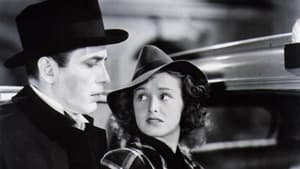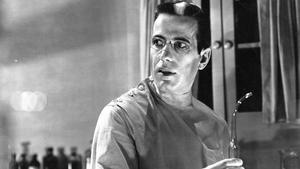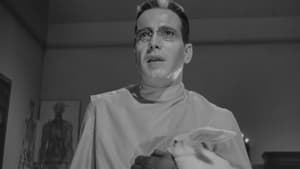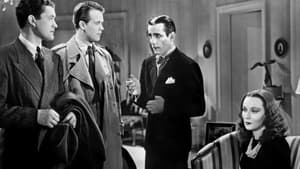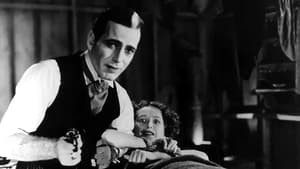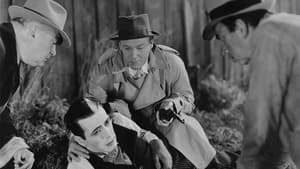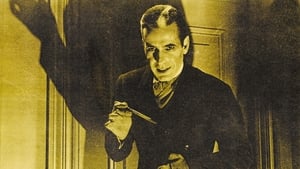Video Sources 0 Views
- Watch trailer
- The Return of Doctor X 1939 Colorized

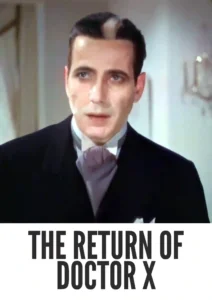
Download The Return of Doctor X (1939) Colorized HD | Wayne Morris | Sci-Fi Horror Classic
Synopsis
Table of Contents
ToggleMad Science and Vampire Lore: The Return of Doctor X (1939) in Stunning Color

Delve into a world of eerie experiments with The Return of Doctor X, a captivating science fiction horror film from 1939, now beautifully colorized for a fresh viewing experience. This film, directed by Vincent Sherman, delivers a suspenseful blend of mystery and the macabre. Perfect for fans of classic horror and those intrigued by early science fiction themes, this HD download brings a unique piece of cinematic history to your screen. Also known as The Doctor X Returns.
The Return of Doctor X Storyline: A Medical Mystery Unfolds
The Return of Doctor X follows the perplexing case of a young doctor, Dr. Walter Garrett (Wayne Morris), who becomes entangled in a bizarre medical mystery. His friend is treating a patient with a peculiar blood condition.As Dr. Garrett investigates, he uncovers a series of strange occurrences linked to the supposed resurrection of the infamous Doctor Maurice Xavier (Humphrey Bogart), a figure presumed dead. Xavier’s return is marked by vampiric tendencies and a thirst for cerebral fluid, leading to a series of gruesome murders. The film builds suspense as Garrett races against time to stop the sinister doctor and uncover the secrets behind his unnatural return. The Return of Doctor X offers a thrilling exploration of scientific ethics and the consequences of tampering with life and death.
Movie Cast
The film features a talented cast of actors who bring this eerie story to life:
- Wayne Morris as Dr. Walter Garrett
- Rosemary Lane as Joan Vance
- Humphrey Bogart as Doctor Maurice Xavier
- Dennis Morgan as Dr. Terry
- John Litel as District Attorney
Movie Genre
The Return of Doctor X falls into the genre of science fiction horror, blending elements of medical mystery and suspense. Its unsettling atmosphere and thought-provoking themes make it a standout film of its time.
Historical Context: Horror in the Golden Age of Cinema
Released in 1939, The Return of Doctor X emerges from the Golden Age of Hollywood, a period marked by innovative storytelling and iconic performances. This film distinguishes itself with its early exploration of science fiction horror themes, setting a precedent for later works in the genre. While it may not be as widely celebrated as some of the era’s other classics, it offers a fascinating glimpse into the evolving landscape of horror cinema and the cultural anxieties surrounding scientific advancements.
Colorization Details
This colorized version of The Return of Doctor X has been meticulously restored using modern digital techniques, enhancing the visual appeal while preserving the film’s original eerie atmosphere. The colorization process involved carefully analyzing the grayscale tones of the original black and white footage and assigning appropriate colors to each scene. While the specific software used remains proprietary, the techniques employed included advanced algorithms for color palette selection and image enhancement. This painstaking process brings new life to the characters and settings, making the story even more engaging for modern audiences. While some may debate the merits of colorizing classic films, it introduces these films to a broader audience, ensuring their legacy for future generations.
Technical Details
- Director: Vincent Sherman
- Screenplay: Lee Katz
- Story by: Jasper Ewing Brady
- Cinematography: Sidney Hickox
- Edited by: Thomas Richards
- Production Company: Warner Bros.
- Distributed by: Warner Bros.
- Runtime: 56 minutes
Technical Specifications
- Download Format: MP4
- Resolution: HD (1080p)
- Compatibility: Compatible with most devices, including smartphones, tablets, computers, and smart TVs.
Reviews and Critical Reception
The Return of Doctor X (1939) is a notable entry in the science fiction horror genre, distinguished by Humphrey Bogart’s unusual role as the sinister Doctor Maurice Xavier. While it may not be considered a major classic, it remains a fascinating and eerie film that showcases the developing trends in horror cinema during the Golden Age of Hollywood. As a relatively obscure but intriguing film, The Return of Doctor X provides a unique perspective on the cultural anxieties of its time.
FAQs
- Q: What is The Return of Doctor X about?
- A: The Return of Doctor X is a science fiction horror film about a doctor who investigates the mysterious return of a presumed-dead scientist with vampiric tendencies.
- Q: Is The Return of Doctor X (1939) a well-known Humphrey Bogart film?
- A: The Return of Doctor X is one of Bogart’s lesser-known roles, offering a departure from his typical characters.
- Q: Is this version of The Return of Doctor X colorized?
- A: Yes, this version has been professionally colorized to enhance the viewing experience.
- Q: What makes The Return of Doctor X interesting for horror fans?
- A: The Return of Doctor X offers valuable insights into the early science fiction horror genre, showcasing its developing themes and visual style.
- Q: What is the download format?
- A: The download format is MP4, which is compatible with most devices.
- Q: What resolution is the download?
- A: The resolution is HD (1080p), providing a high-quality viewing experience.
Download Now in HD!
Watch The Return of Doctor X Today!

